Camping in the wild can be an important part of the bowhunting experience, offering solitude, proximity to nature, and an opportunity to hunt unpressured game. Most of us spending any length of time in the woods are going to sleep in some kind of tent. Sure, you can roll up in a tarp or crawl into a bivouac bag, but unless you’re hunting during the early season in an area with predictable friendly weather, you’ll be able to save a lot more energy for hunting by coming back to a warm, dry, reliable shelter at the end of the day. The choice of tents is usually dictated by some combination of weight, expected weather, ease of assembly, and cost. Most of us who do a lot of this kind of hunting have several types of tents for varying conditions. Here, several experienced backcountry bowhunters will tell us about their choices and why they made them.
The Editors
From Wall Tents to Ultra-light
For the greatest comfort and security in really nasty weather, it’s hard to beat a good, old-fashioned canvas wall tent. Properly set up, one will stand up to almost any weather. Wall tents offer plenty of room to store gear, cook, and move around. Unless you’re hunting in an area with reliably warm weather, be sure to get one with a vent for a stove pipe. Assuming an adequate supply of wood, even a small sheepherder’s stove will dry soaking clothes, allow easy cooking, and generate enough heat to drive you out of the tent in freezing weather with all the baffles open.
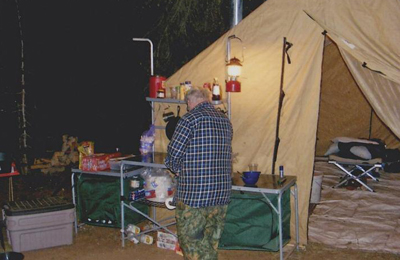
This Montana Canvas tent has five-foot side walls and utilizes Relite side walls to help keep the weight down. The internal aluminum frame can be erected by one person, making it ideal for a base camp.
Wall tents do have disadvantages. They are heavy, and you won’t want to carry one far from where you can land an airplane or tie up a horse. Expect to pay between one and two thousand dollars for a new one of high quality. Because of their square sides, they aren’t highly wind resistant and are best pitched in the shelter of timber. They take some time and effort to erect properly, so they aren’t an ideal choice if you plan on moving camp frequently.
Despite these drawbacks, there’s nothing like one for comfort on an extended trip in foul weather. I can’t imagine hunting Kodiak without one. Montana Canvas tents (montanacanvas.com) have a well-established reputation and many models to choose from. Their 12 x 14 Standard weighs in at around 70 pounds.
Next, you’ll want what I think of as a “mid-range” tent—one that’s too heavy for backpack hunting but big enough to turn around in comfortably and store some gear. This is the tent I use on float trips and car camping hunts. I do fine with my Cabela’s 4-man Alaskan Guide tent. Its dome shape makes it wind resistant and the vestibule makes a good place to store wet gear. However, a word of caution. There are no objective standards for what makes a “4-man” tent, just as there are no standards for rating a sleeping bag to “10-degrees.” The “4-man” model is about right for two people and gear. Furthermore, as with most internal frame tents, if you break a pole or two, you’re going to have trouble keeping it together. I always carry extra pole segments to make repairs on the spot. This tent has a rain fly, which is a necessity in bad weather. If you don’t need a rain fly, you don’t need a tent. Its 24-pound weight makes it too heavy for backpack hunting.
Finally, we get to true backpack tents where every ounce of weight is critical. Here, I have to give a nod to modern technology. For years, my standard sheep hunting tent was an old model by Moss that was reliable, comfortable and weighed about seven pounds. But the older I get, the more a pound seems to weigh on an extended mountain hunt. The new ultra-light tents are a real improvement from the old days. I’m currently using a Copper Spur from Big Agnes (bigagnes.com) that weighs just under four pounds with rain fly, ground cloth, poles, and stakes. It’s a tight fit, but Lori and I have successfully shared it on a number of trips.
A final note: on early season hunts, protection from bugs can be as important to comfort as protection from weather. All of the lighter models mentioned above have mosquito netting. Make sure yours does too, and carry a small roll of duct tape to repair tears. Believe me—the bugs will find them.
There are even lighter, simpler options such as a SIL tarp, which I also have. However, my thoughts about backwoods shelters were refined in Alaska, where a dry, stable shelter can mean the difference between comfort and misery, or worse. I have endured some really nasty weather in all of these tents.
Don Thomas
Thoughts On Tents
As one who has spent literally hundreds of nights, from days to weeks at a time, in the wilderness in various kinds of tents, I can say that there is nothing more important to creature comfort in the wild than shelter from the elements, especially overnight. From a gossamer “fly” tarp tent weighing but a few ounces and erected using trekking poles to a framed behemoth of a wall tent weighing over 150 pounds, I have tried most. No single tent is perfect for every situation. No time is better than now to explore these variations and options because of the myriad kinds of high-quality tent shelters available today.
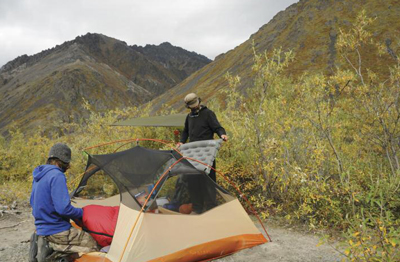
Backpacking tents come with different ratings. Depending on where you are going, and what time of year, it is best to have a tent that can withstand the expected worst weather.
When first learning (mostly from my mistakes), my backcountry tents consisted of simple plastic Visqueen shelters, lean-to style or A-frames constructed low to the ground out of the wind, with the same piece of plastic or tarp used for a ground cloth. Add a mosquito netting and a warm bag, and it was adequate in any but the most extreme summer or early fall excursions when bugs were a major problem. The simplicity, light weight, and low cost made a lot of sense for a 20-something learning the high-country and bush river systems of wilderness Alaska on a budget.
Over the years, longer backpacking expeditions for sheep and goats above timberline, or tundra camping, called for a bit more in terms of shelter due to exposure to wind and other elements and the importance of warding off hypothermia at any cost. When choosing a backpacking tent, weight is foremost in my mind, along with strength of design and maximum square-footage per weight ratio.
Fortunately, there are several manufacturers providing top quality. Big Agnes and MSR make great lightweight designs and are my current go-to backpacking tentmakers, but there are others such as REI, Marmot, and Nemo, to name a few, offering great choices. Expect to pay in excess of $350 for a quality lightweight backpacking tent. When picking one, I suggest that you “go up a size” i.e choose a 2-person for going solo; a 3-person for a party of two, etc. I always pick a tent with a vestibule area for shedding wet clothes and boots outside but still out of rain or snow. This also allows me to set up a canister stove outside to avoid damaging a tent floor. I also choose a tent with maximum ventilation to avoid condensation. Single wall construction tents allow for lighter weight but are not practical in my country due to mosquitoes and condensation, so I prefer tents with a fly. I always choose low profile for wind considerations, and plenty of stakes. Significant head and leg room, at least for my 6’5” frame, is also important.
At the other extreme, when weight is not a consideration, there is nothing like the luxury of a good wall tent, especially for those of us on the far side of 60. For fixed-camps on moose hunts, deer hunting in Alaska on the islands, and when I have elk hunted in the Lower-48, a base camp consisting of a wall tent, with the option of spiking out with a backpacking tent, offers perhaps the very best of both worlds. A 12 x 14 wall tent with five-foot sidewalls is the Taj Mahal of accommodations when coupled with a good wood stove, cots, lanterns, cast iron skillets, and 25 pounds of potatoes and onions! I prefer the standard cotton-based 10-12 oz. untreated canvas material, but with the sidewalls made of a waterproof material such as polyester, which is 50% lighter. Sod cloth and a stove jack are necessities. With only the canvas top, the tent will still “breathe” and avoid condensation, but the light waterproof sidewalls will be great in the wind and rain. I don’t like most “treated” canvas products, as their ability to shed water can make condensation a serious problem in wet climates like Alaska’s.
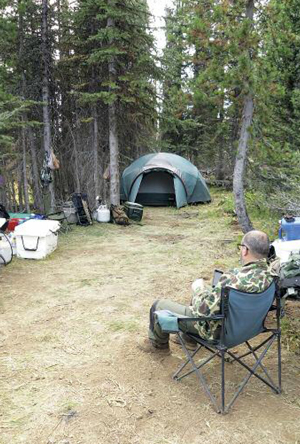
In lieu of a wall tent, this Cabela’s Alaskan Guide tent goes up easy and has all weather protection.
Most of the time I use wall tents in timber country, where a tent frame can be simple to construct out of native materials with an ax and saw. However, I do own an 8 x 10 wall tent with a slip together internal aluminum frame that is the cat’s meow when setting up in tundra or elsewhere away from timber. It is a perfect two-person Hilton for drop-off, fly-in, or boat-in hunts, coming in under 100 pounds. Montana Canvas makes the models that I now own in different sizes. In serious rainstorms, a simple fly can be erected over a wall tent with 5mm Visqueen. Then put down a drop-cloth or plastic floor, except in the main walkway down the middle and around the stove. Remember, in bear country we avoid cooking in the same tents we are sleeping in! Finally, make sure that the stove in your wall-tent has plenty of stovepipe and a spark arrester, as nothing could be worse than burning a big hole in the roof of a new wall-tent.
When I started doing two-week river floats for moose and caribou in the Alaska bush, and later in Siberia, the rafts and bush-plane access offered a means to take a more substantial tent. However, since there still was limited capacity, and making and breaking down camp almost daily as we traveled downstream was work, a hybrid-type of tent that weighed less than 50 pounds was preferred. We found an Alaska-made, dome style “bomb shelter” type of internal frame, single wall 4-person that worked well, but it is no longer being made. The Arctic Oven (arcticoventent.com) and other tents like it are still being manufactured and work well on these hunts where backpacking is not necessary and wall tents not practical. The best I have seen or used lately in this category—intermediate weight, 2-4 person tents under 50 pounds that accept a wood stove and are true three-season tents—are the Snow Trekker (snowtrekkertents.com) and the single pole lightweight Kifaru (kifaru.net) designs.
Finally, I have to stress that although survival and comfort are different, there is nothing like a waterproof SIL-fabric tarp and 50 feet of good cordage in any wilderness shelter situation. I carry two on serious long hunts: an 8 x 10 that can become a sleeping tent in an emergency or spike camp; and a 12 x 14 that can be erected as a rain or snow shelter, lean-to, or set up in minutes to get out of the elements. These tarps are quite expensive, but along with wilderness experience and good woodsmanship one might just save your life sometime.
Doug Borland
Tents for All Seasons…and All Reasons
I have owned over a dozen tents in my lifetime, not including tarps hung over rope and the old tube tents. My very first tent was a WWII pup tent, which consisted of two sections of oiled canvas that buttoned together to form the peak. Three-piece hickory tent poles, hemp stake loops, end tie down ropes, and metal stakes rounded out this simple but heavy set up with no end flaps. My father gave it to me when I was ten-years old, and I used to love to set it up and sleep in it during our many hunting and fishing trips.
Fast forward 50+ years of venturing into the outdoors, I have finally (one should never say that) settled down with five tents, all for different uses and situations.
Wall tents offer the most comfortable base of operations for the outdoorsman. Mine is a 12’ x 14’ Montana Canvas (montanacanvas.com) Blend tent with Relite sides and attached sod cloth. This has the distinct advantage of being much lighter than an all-canvas tent, with the same weatherproof capacity. Toss in an aluminum frame, heavy ground cloth, wood stove, a handy pantry that straps over the 5’ siderails, and it is hard to beat for comfortably spending several weeks in the woods hunting and fishing in any weather.
I can’t say enough about the comfort of a wall tent, but many times I prefer to take my 8-man Cabela’s Alaskan Guide tent due to its light weight and the simplicity of setting it up (cabelas.com). Like all “man-rated” tents, yes, it will sleep eight—very uncomfortably and with little to no room for gear. I always figure that the true number of people who can comfortably spend any length of time in tents is half the man-rating the manufacturer states. For this tent, three people with cots and gear is quite comfortable, although four hunters, cots, and gear is about the maximum for comfort.
I was turned on to the quality of this tent a few years back when my friend Jim Akenson and I packed into the Eagle Cap Wilderness on his stock to hunt deer and elk for ten days. It loaded on the mules easily and held both his and my gear with plenty of room for us to move around and spend time socializing in the evenings.
The Alaskan Guide tent is fairly light, goes up easily, and can take plenty of foul weather. I would always suggest getting a protected footprint tarp for every tent with built-in floors. The footprint adds another layer of protection to the floor from sharp rocks or sticks that weren’t removed before setting it up.

This REI one-man tent is rated for three seasons, has a vestibule for limited storage, and weighs less than three pounds, ideal for backpacking.
One of my favorite tents is an older REI 4-season, 4-man dome tent with fly. This tent has been my home for many weeks over some 25 years and has always served me well. It also withstood a clocked 79 mph storm out on the Alaska Peninsula near Iliamna back in 1988. Water was running under the tent for two days, and the poles would bow in and almost hit me, but it never failed and never leaked. I also packed it up into the North Cascades range in Washington and hunted mountain goats for two weeks back in 1995, where it withstood high winds, rain, and heavy snow. It is a very comfortable and rugged tent with lots of room. I still use it for short hunts and fishing trips.
My latest acquisition is the KUIU Mountain Storm 4-season, 2-man tent (KUIU.com). Almost a pound lighter than the REI dome tent, I wanted this for a mountain goat hunt this year where I camped at over 9,000 feet for five days at a time. I just returned from a five-day goat hunt several miles into the wilderness, and the tent was easy to set up. It’s very rigid and strong, has sealed seams, and is large enough to keep my strung longbow and pack inside and out of the weather. The rain fly can be removed very easily with a unique clip system. The tent is not cheap, but when every ounce of weight added to your backpack needs to be kept in check and safety in any weather situation is paramount, this is one of the best tents I’ve seen.
Lastly, I have an REI one-man tent that I have used on several occasions backpacking in to hunt bear, deer, and elk. It weighs a mere three pounds, which includes the footprint. It is small, but on one spring bear hunt I packed into the wilderness five miles with Molly, my Lab, and we both slept in it comfortably. It has a small vestibule that is not large enough for a backpack (mine has its own waterproof cover), but big enough to keep boots out of the rain, as well as heat water for coffee and prepare meals when the weather turns foul.
There are myriad choices of tents out there, and finding the right one—or ones, as in my case—can be a daunting challenge. I always err on the side of safety, picking tents that are designed to handle the worst weather, which can easily hit just about anywhere with little notice. Yes, they cost a little more, but like most things in life, you get what you pay for.
T.J. Conrads



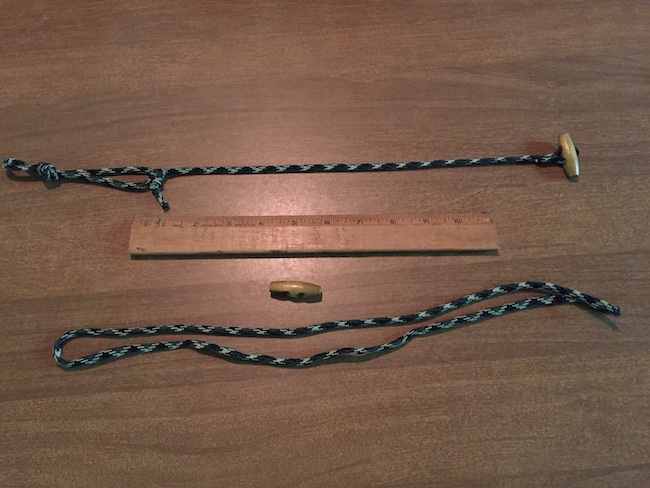
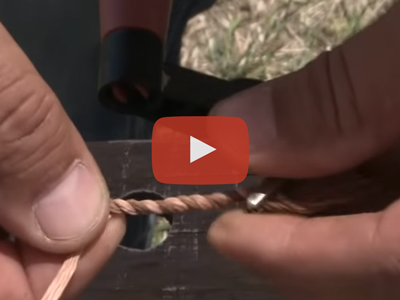
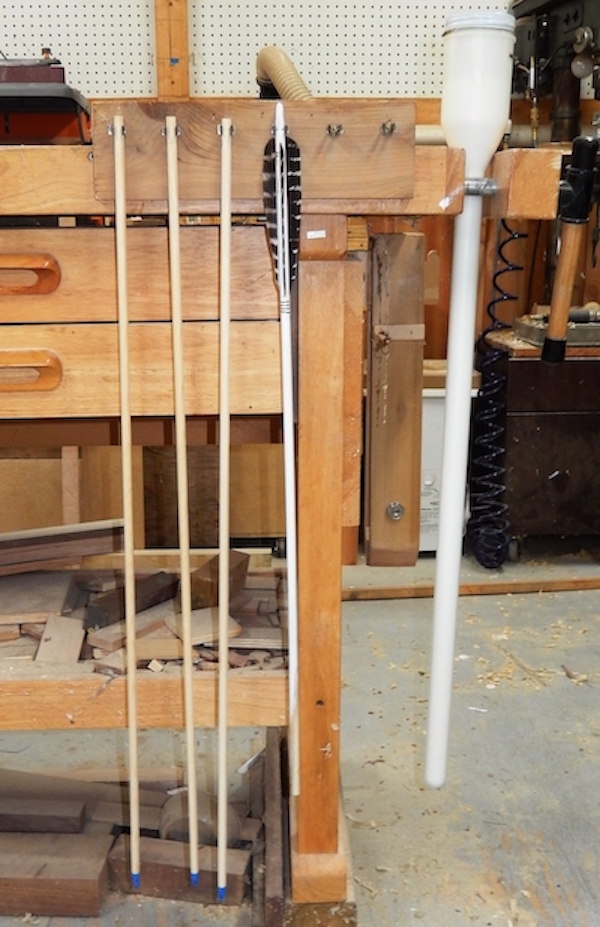

Leave A Comment